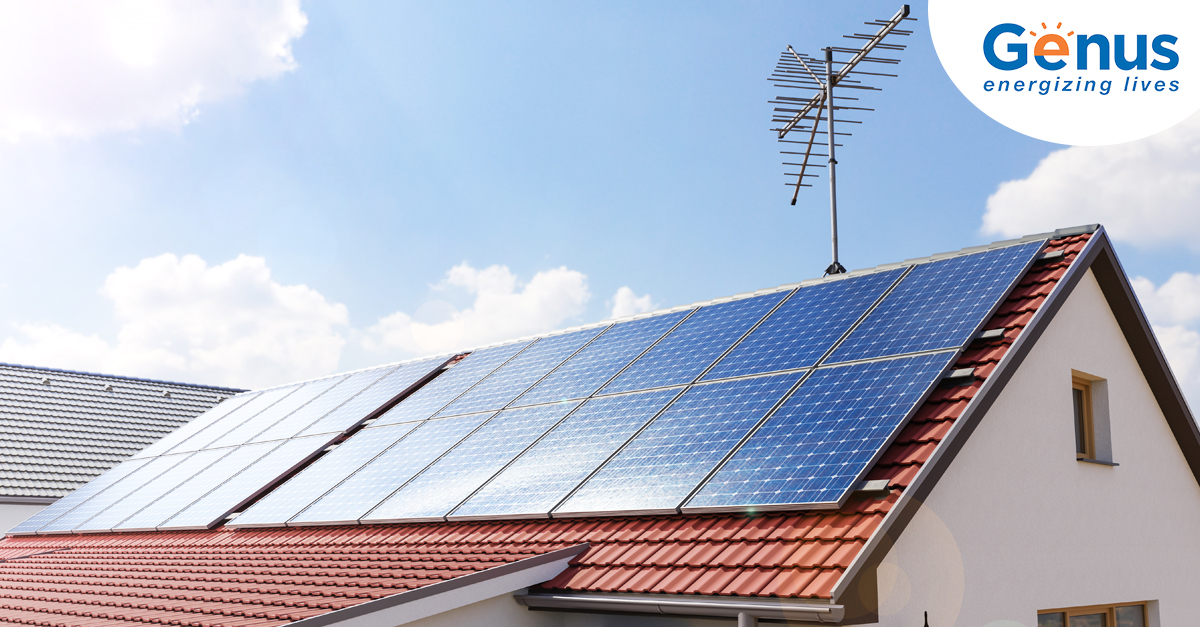
A photovoltaic system uses sunlight and solar energy to generate electricity for our homes and offices. While they are a great source of creating environment-friendly and renewable energy, shade and obstruction can be a hindrance to its power output. In a study on shading analysis for solar panels, it was found that the shadowing in solar PV system reduces its output power by over 75% even if only one cell is shaded. To understand this problem better and address it, read on.
Why Shading Causes Power Loss
In a solar energy system, each module is connected in series, forming a link or a string. Since each module is connected to the other, whatever happens to one cell, affects other cells as well. Partial shading of solar panels reduces their ability to generate power as they are receiving less solar energy. Since the other unshaded cells are connected in series, they can only generate the same amount of energy as the shaded cells, even though they are receiving more sunlight.
Also Read: A Handy Guide to Solar Panel Wiring
How to Reduce Shading Losses in PV Systems
While “put the solar panel where there’s no shade” seems like the obvious resolution to the dilemma stated above, it isn’t so straightforward. Apart from the shade from trees or buildings, accumulated dust, fog, or horizontal shade from side panels can be the reason for an obstructed power supply. Here are some ways in which you can reduce the shading effect on PV systems.
Also Read: How Shade Affects Solar Panel Efficiency?
Stringing Arrangements
When modules are connected in series, they form strings. These strings can be connected parallelly to an inverter. The current running through every module and the voltage in parallel strings needs to be the same.
If even one module is shaded, it will drastically affect the power output of a string whereas it has no effect on parallel strings and how much power they generate. Hence, the power output of the whole array can be maximized if shaded modules are grouped into separate strings. This way, shaded modules can generate less power on their own but won’t affect the power generation capacity of unshaded modules.
Also Read: Effect of Weather on The Performance of Solar Panels
Bypass Diodes
A Bypass Diode, as the name suggests, is a device that allows the current to skip over the modules that are shaded. With the help of a bypass diode, the current generated in the unshaded cell can bypass the shaded cells. While it means that the current generated in unshaded cells is not dependent on the shaded cells, it also means that you’ll lose any output generated from the cells that are skipped over.
Typical solar modules have three bypass diodes that equally divide the entire module into three different strings, so that even if one section goes down or is shaded, the other two will still generate power.
Module Level Power Electronics (MLPEs)
MLPEs are devices that provide benefits like mismatch mitigation, module-level monitoring, and increased performance under shade. They are connected to individual modules and provide maximum power point tracking. MLPEs can be of two types – DC optimizers and Microinverters.
DC Optimizer
A DC optimizer boosts the current output of a shaded module by reducing its output voltage. This allows the shaded module to match the current flowing through an unshaded module to maintain the overall power supply. A DC optimizer system requires an inverter for converting DC electricity to AC electricity.
Microinverters
By connecting a small inverter to every module, the maximum power output can be increased. The microinverter will allow every module to convert DC to AC and since their outputs are connected in parallel, one panel won’t impact the other panels.
Also Read: How to Choose Between String Inverters and Microinverters?
To wrap up, remember that ground-mounted solar systems are at more risk of shading. To reduce the shading in solar panels, placement is very crucial. Using the above solutions to optimize the PV design and getting positive yields should be the focus of your project.
